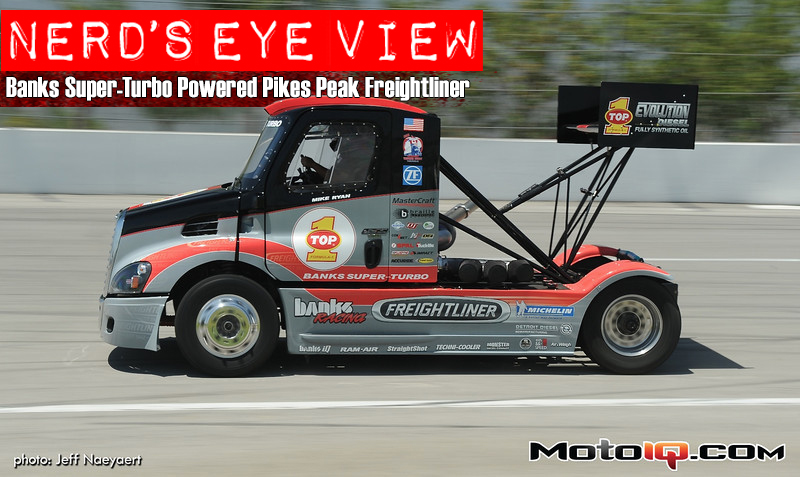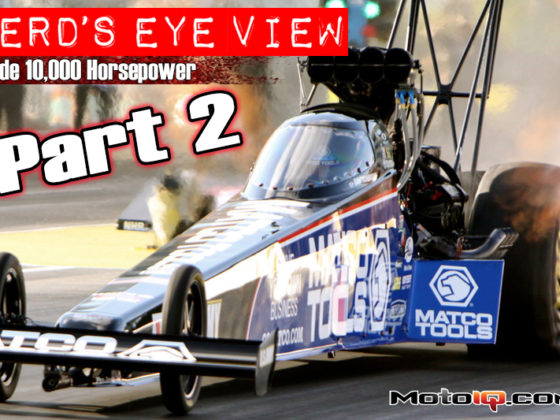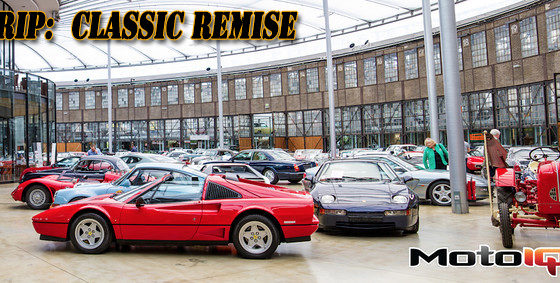
Nerd’s Eye View: Mike Ryan’s Banks Super-Turbo Powered Pikes Peak Freightliner
Khiem Dinh is an engineer for Honeywell Turbo Technologies at the time of this writing. All statements and opinions expressed by Khiem Dinh are solely those of Khiem Dinh and not reflective of Honeywell Turbo Technologies.
A 2008 Freightliner Cascadia is usually not the first choice when deciding to build a Pikes Peak Hillclimb vehicle. Mike Ryan is not your ordinary racer though and he likes his big trucks. This truck is unlike any other truck in the world, not even like those racing trucks out of Europe. Your basic semi-truck uses a turbo that most time attack cars would laugh at for being comically small. Not this truck, no siree Bob! To make this truck exceptionally special, Mike Ryan enlisted the help of Gale Banks to boost the power to hill moving levels. It’s not easy making around 2400hp and 4000+ lb-ft of torque, but we’re going to show you how it was done along with the tricks and components required to make a 5-ton semi-truck turn and stop.






